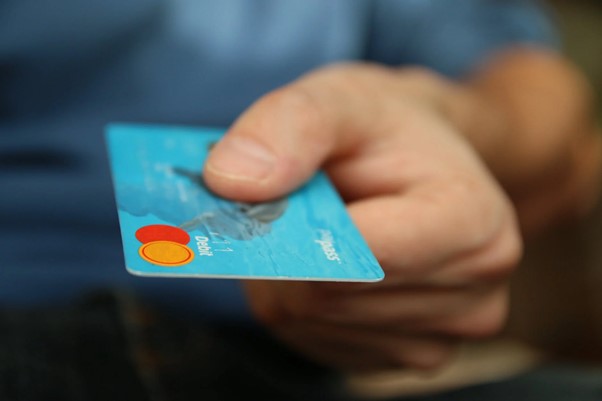If you are in debt, then you may be torn between opting for an IVA or a DRO (debt relief order). This is understandable, but there are things that you can do to try and make things easier on yourself. One of the steps that you need to take is understanding the difference between an IVA and a DRO. Take a look below to find out more.

What is a DRO?
A Debt Relief Order, or DRO, is a procedure where you apply through an approved intermediary to the Official Receiver. The Official Receiver will confirm your criteria is eligible for a Debt Relief Order, and you will then need to cooperate with the Official Receiver during the 12 months the DRO is in force, which is called the moratorium period.
After 12 months, the DRO moratorium will end and you will be discharged from your debts, however, if you have a change in circumstances within the 12 months, such as an improvement in your disposable income due to an increase in your income, or receiving a lump sum through a windfall, or if you take out further credit, then the DRO may be revoked.
We're Here to Help YOU
Speak with Our Team of Debt Consultants.
Do you have questions or would you like more advice?
You can book an appointment with our team of debt consultants in minutes.
Just click the button to book your appointment today.
May not be suitable in all circumstances.Fees apply. Your credit rating may be affected.
What is an IVA?
An Individual Voluntary Arrangement, or IVA, is a formal agreement with your creditors, where you agree to make an affordable payment for a fixed period, usually five or six years. It is proposed through an insolvency practitioner, who will help you prepare the necessary paperwork and ensure that the proposal strikes a fair balance between your interests and the creditors’ interest.
It requires 75% of your creditors who vote on it to approve the proposal, and creditors may request changes to it, but you would need to agree to these before it is approved. Once the IVA is approved, the insolvency practitioner will then work with you to ensure the proposal is implemented as per its terms. If you do not keep up with the payments, or stick to the terms of the IVA, the IVA can be terminated.
What are the Requirements for a DRO?
If you want to take out a DRO then you should know that there are a few requirements that you will need to meet. You need to make sure that you have not had a DRO in the last six years and you also need to make sure that you are not able to pay your debts. Your debt must also be £30,000 or less, and your assets must total less than £2,000. After your household expenses, you need to have £75 or less.
Your car, if you have one, should be worth less than £2,000, as this will be excluded from your total assets. It’s a good idea for you to make sure that you meet these requirements before you go ahead with your DRO application. If you own a property, you would not be eligible for a DRO, even if your property is in negative equity. You cannot take on a joint DRO with a partner either, so if you and your partner are both struggling with debt, then you will need to make separate applications for a DRO.
What are the Requirements for an IVA?
If you want to take out an IVA, the criteria can differ between insolvency practitioners, however, you would usually need to owe more than £7,000 to two creditors or more, and you should be able to afford more than £76. There are no restrictions on the assets you can own, and you can exclude your car and house from the IVA, however, this is subject to creditor approval.
Also, if you are a homeowner, the creditors would usually expect you to release equity in month 54, or extend the arrangement by a further 12 months, making the IVA term six years. You can potentially offer joint IVA proposals to your creditors if you and your partner are both struggling with your debt.
How do the Processes Differ?
There are some similarities with the processes. Both of the solutions will mean that you have an expert working with you, and you will need to ensure you give them accurate information about your financial circumstances. If you go ahead with the IVA, then you will have an insolvency practitioner by your side, and if you have a DRO then you will have an approved intermediary, followed by the official receiver. They will deal with the creditors and ensure that your debt solution is processed properly.
Both of them will deal with your unsecured creditors, however, there are some debts that cannot be included, for example, Student Loan, child maintenance arrears or debts arising from fraud. Neither solution will cover secured debts so you would be required to continue payments to these, although if you have secured debts, this may make you ineligible for a DRO anyway.
Pros of an IVA
There are many pros to taking out an IVA. Most importantly, you will be able to have an affordable payment, as well as protect your assets, subject to creditor approval. Creditors should not harass you for payment. The monthly payment will be based on your circumstances, and it will only change if your circumstances change. The interest rates of your debt and any charges will be frozen, and you will not have to concern yourself with bailiffs or similar.
An IVA can be flexible if there is a change in circumstances, so the insolvency practitioner can sometimes amend the terms, although this may need creditor approval. Also, if you forget any debt during the application process, then this can be added to the IVA at a later date. The IVA does not have specific restrictions, although the terms of the IVA will usually stop you from obtaining further credit of more than £500 without the permission of the insolvency practitioner.
Depending on your circumstances, you can choose to exclude certain creditors, for example, if they are required for you to continue trading, although this will be subject to creditor approval. Unlike a DRO, there is no time limit on proposing an IVA, so you do not have to wait six years from when your last IVA finished.
Cons of an IVA
Some of the cons of getting an IVA include the fact that it could impact your employment, depending on your profession. It will also impact your credit rating. Another con is that it is not private; the details will be listed on the individual insolvency register. You will also have to follow the budget you prepare with the insolvency practitioner during the application process for the term of the arrangement.
The IVA will usually be for a longer period of five years, although you may be able to propose a shorter term if you are able to offer a lump sum. If you own a property, then you will need to attempt to release a certain amount of equity from your home, and if you are unable to do so, the IVA will be extended by 12 months. Residents of Scotland can not apply.
There are some debts that cannot be included in the IVA, such as child maintenance arrears, Student Loans and debts arising from fraud. Although the IVA will not be terminated if your circumstances improve or you receive a windfall, you may be required to pay more into the IVA.
Pros of a DRO
Some of the pros of getting a DRO include the fact that it is inexpensive. Entering a DRO is just £90. It is the best solution if you have a smaller amount of debt or if you are struggling to find an affordable way to pay off your debt, as you cannot afford to pay your creditors more than £75 per month.
When you enter a DRO, all of the interest and charges that relate to your debt will be frozen. On top of this, when you have been approved, your creditors will not be able to take legal action. If you are struggling to deal with the calls, letters and demands from your creditors or debt collection agencies, then this will be a big relief for you.
The biggest advantage that comes with a DRO is that it helps you to escape from debt very quickly as it will be written off after a year. DROs are ideal for those who are struggling with debts under £30,000 and are not able to pay them back.
Cons of a DRO
There are many advantages to entering a DRO. There are also a lot of disadvantages though. You will have to make sure that you consider them to ensure the DRO is the correct solution for you.
The biggest hurdle is that you will not be able to apply if you are a homeowner; if you own your property then you cannot enter this kind of solution. The financial restriction goes even more than this too. You can only apply if you have very little assets, so you must have less than £2,000 of assets, although cars under £2,000 are excluded from this.
You must be able to demonstrate that you have less than £75 disposable income, and you must not have been subject to a DRO in the last six years. Residents of Scotland cannot apply for the DRO. During the period of the DRO, you will be subject to DRO restrictions, such as being unable to act as a company director, or trade under a different name.
Most DROs end after a year, following which the debts are written off, however, if the Official Receiver believes you made your debt situation worse before entering the DRO, they may apply for a Debt Relief Restriction Order, or DRRO, which can extend the period the DRO restrictions apply for.
There are some debts that cannot be included in the DRO, such as child maintenance arrears, Student Loans and debts arising from fraud. Also, if you forget to tell the Official Receiver about a debt, then this debt will not be included in your DRO, and you will be required to continue making payments to them.
A DRO can also be revoked within the 12 months it is in force, if your circumstances change and you’re no longer eligible under the criteria. Also, a DRO can have a similar effect on employment as bankruptcy, depending on your profession or contract of employment. The DRO will also affect your credit rating, and will also be recorded on the individual insolvency register.
Debt Relief Order or IVA?
If you are struggling to make your decision, here’s a high level overview of the criteria to help you decide:
An IVA tends to be most suited to those who have unsecured debts of more than £7,000, who can afford to make a payment of more than £76 a month to their creditors, especially if they own an asset of value.
A DRO may be an option if you cannot afford to make a payment of £75 per month, do not own a home, don’t have assets over £2,000 and have less than £30,000 unsecured debt.
We're Here to Help YOU
Speak with Our Team of Debt Consultants.
Do you have questions or would you like more advice?
You can book an appointment with our team of debt consultants in minutes.
Just click the button to book your appointment today.

